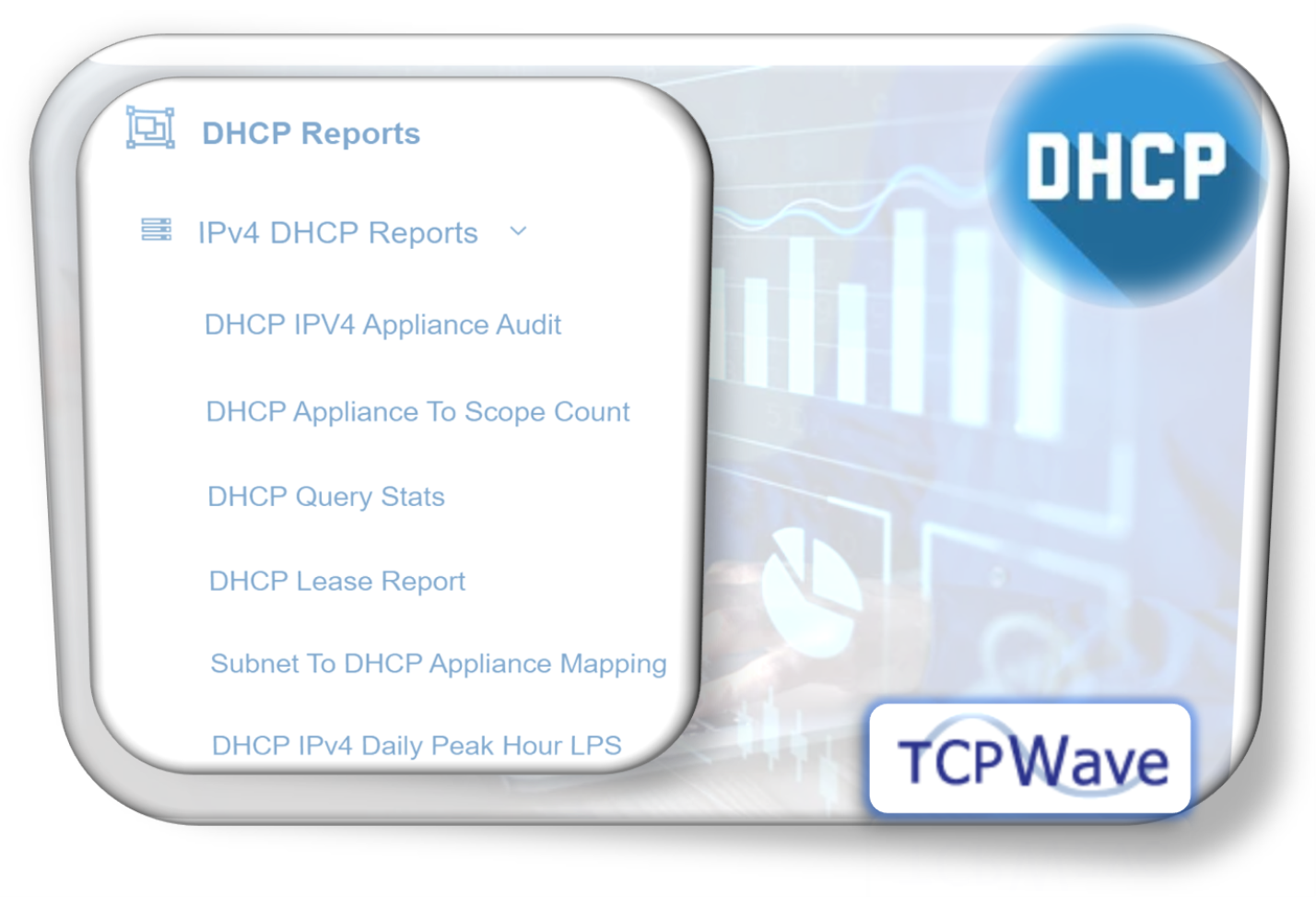
The Dynamic Host Configuration Protocol (DHCP) application server is a vital part of any network infrastructure, and it is imperative to audit the activities. It can provide valuable information to the network administrators on client-server exchanges that occur when IP addresses are allotted, successful or failed lease grants, and their corresponding acknowledgments. As the organization’s network data lies within the application, the TCPWave reporting framework monitors your core services to keep the applications up and running. The TCPWave’s Reporting framework helps analyze the DHCP data and diagnose operational difficulties. This white paper provides insights on the DHCP Reports – IPv4 Reports.

The DHCP reports are grouped as follows:
|
Report Name |
DHCP IPv4 Appliance Audit |
|
Description |
It provides complete audit information regarding operations performed on a specific DHCP Appliance or All Appliances by an administrator. The IPAM retrieves and displays the information for a specified time provided by the users |
|
Grid Data |
|
|
Bar Chart Data |
Displays the following information of all the appliances for the specified date range.
|
|
Sample Report |
|
|
Report Name |
DHCP Appliance To Scope Count |
|
Description |
It provides the scope count for each DHCP Appliance in the IPAM in the chart and grid format. |
|
Grid Data |
|
|
Bar Chart Data |
Displays the following information for the specified date range.
|
|
Sample Report |
|
|
Report Name |
DHCP Query Stats |
|
Description |
It displays information about the statistics of DHCP appliances such as active leases, total scopes, subnets, etc. based on the selected month/week/date range. |
|
Grid Data |
|
|
Sample Report |
|
|
Report Name |
DHCP Leases Report |
|
Description |
It provides time-sequenced list of which MAC address requested an IP address and when. Assists with troubleshooting or compliance tracking and auditing. |
|
Grid Data |
|
|
Sample Report |
|
|
Report Name |
Subnet To DHCP Mapping Report |
|
Description |
It provides a detailed report about the subnet that is assigned to the DHCP Appliance. |
|
Grid Data |
|
|
Sample Report |
|
|
Report Name |
DHCP IPv4 Daily Peak Hour LPS |
|
Description |
It displays the DORA (Discover Offer Request Acknowledgement) packets with LPS (Lease Per Seconds) details for the peak hour of the day for the selected appliances and date range. Peak Time and LPS are displayed on the basis of acknowledgement packets. This report helps the network administrators identify the load carried by each DHCP appliance during active hours. This information helps to plan better for capacity and lessen the risk of overloading DHCP devices. This report uses organization global drop-down. |
|
Grid Data |
|
|
Sample Report |
|
With such a robust and powerful monitoring engine embedded as an integral part of the TCPWave IPAM, organizations can dramatically improve their service level agreements and keep their mission-critical services up and running. The network administrators have the power to manage the entire DDI suite with the most reliable, secure services and the best real-time views – all from a single pane of glass that serves as a single source of truth. For a quick demo on enforcing monitoring and enhancing the organization’s DNS service availability, contact the TCPWave Sales Team.